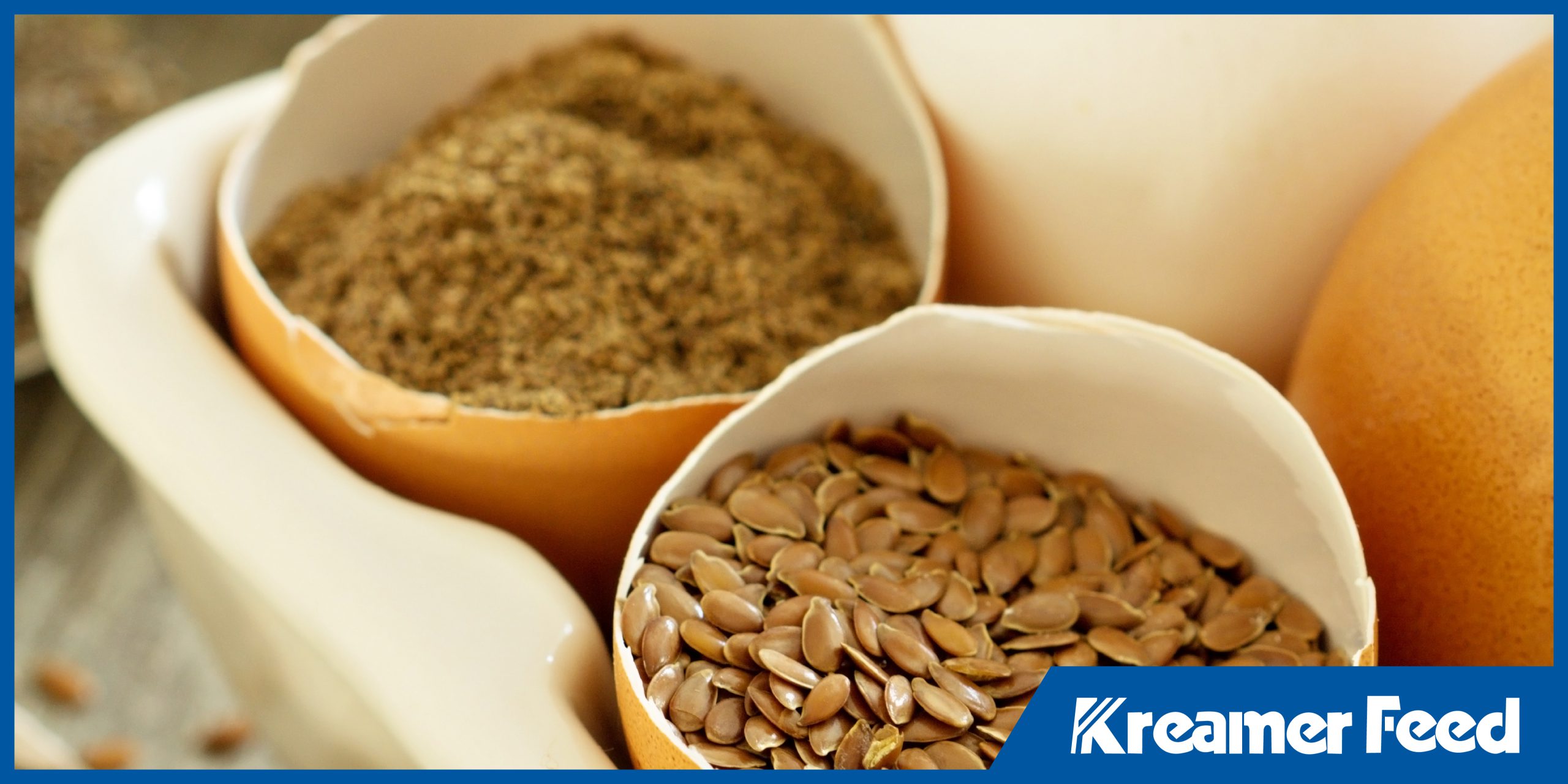
When it comes to raising healthy, productive animals, balanced nutrition is everything. At the core of every quality poultry feed or livestock feed are three essential building blocks: protein, fiber, and fats. These macronutrients may be simple in concept, but they play a complex and vital role in animal health, performance, and overall well-being.
At Kreamer Feed, we’ve been formulating balanced, dependable feed since 1947. As a family-owned and operated business, we understand how important it is to get the fundamentals right. When your animals thrive, your farm thrives too.
Let’s take a closer look at macronutrients in feed, what each one does, and how to ensure you’re offering the right balance for your poultry and livestock.
Protein in Animal Feed: Building Strength from the Start
Protein is perhaps the most well-known macronutrient in animal feed, and for good reason. It is essential for muscle development, tissue repair, egg production, and growth. In young animals especially, high-quality protein supports strong starts and rapid development.
For poultry, protein is critical in the early weeks of life when chicks are growing quickly and laying hens are preparing to produce eggs. For livestock, such as cattle and swine, protein supports daily weight gain and reproductive health.
Good sources of protein in feed may include:
- Soybean meal
- Alfalfa
- Fish meal
- Field peas
- Organic plant proteins
At Kreamer Feed, we carefully select and balance our protein sources based on species, age, and production goals. We also offer organic feed options that maintain strong protein levels without the use of synthetic additives.
Fiber for Livestock: Supporting Digestion and Gut Health
Fiber is often overlooked, but it plays a vital role in maintaining digestive health. This is especially true in ruminants and older animals. Fiber for livestock helps regulate the digestive process, promotes fullness, and supports beneficial gut bacteria.
In ruminants like cattle, fiber is essential for proper rumen function. In poultry, fiber is used in moderation to aid digestion and gut health without reducing nutrient absorption.
Common fiber sources include:
- Beet pulp
- Soy hulls
- Alfalfa
- Oats and barley
Balanced fiber levels can improve feed efficiency and overall health. Too much fiber, however, can limit nutrient uptake. This is why a tailored approach to balanced animal nutrition is important. At Kreamer Feed, we formulate each of our feeds with attention to fiber type and level.
Fats in Poultry Feed: A Source of Energy and Efficiency
Fats are a concentrated source of energy and an important part of performance-focused diets. Fats in poultry feed help birds maintain energy levels, improve feed efficiency, and support the absorption of fat-soluble vitamins such as A, D, E, and K.
In colder months, dietary fat helps livestock maintain body condition and temperature. In poultry, it can also support feather development and egg production.
Typical fat sources include:
- Vegetable oils such as soybean or sunflower oil
- Animal fats (used in some conventional feeds)
- Flaxseed or other omega-rich ingredients (used in premium or organic feeds)
At Kreamer Feed, we aim for energy-dense formulations that fuel productivity while maintaining digestive balance. Our blends provide the right combination of fats, protein, and fiber to support steady growth, metabolism, and efficient feed conversion.
Why Macronutrient Balance Matters
Each species and life stage requires a different balance of protein, fiber, and fat. Laying hens have different needs than broilers. Weaning piglets require different nutrient levels than market hogs. A one-size-fits-all approach often falls short.
Balanced animal nutrition means offering the right nutrients, in the right amounts, at the right time. At Kreamer Feed, we make that easier with formulas tailored by species, life stage, and production goals.
Smart Nutrition Starts Here
At Kreamer Feed, nutrition is not an afterthought. It is the foundation of everything we do. With almost 80 years of feed manufacturing expertise, we create poultry feed and livestock feed that reflects the latest in nutritional science and is backed by generations of trust.
To learn more about our formulations and how our macronutrient-balanced feeds can help your animals thrive, visit KreamerFeed.com. Strong animals start with strong feed, and strong feed starts here.